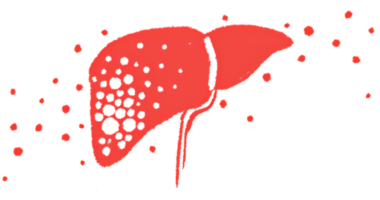Hemophilia B prevalence
Last updated Oct. 31, 2025, by Lindsey Shapiro, PhD

Hemophilia B is the second most common type of hemophilia, affecting an estimated 1 in 25,000 male infants at birth.
People with hemophilia are susceptible to easy and excessive bleeding because they lack certain blood clotting proteins. Hemophilia B is marked by a deficiency in a clotting protein called factor IX (FIX) due to F9 gene mutations.
Hemophilia B affects people of all races and ethnicities, although it occurs predominantly in boys. Some geographical differences in hemophilia B prevalence may be observed, but this is likely influenced by regional disparities in healthcare access, diagnostic processes, and patient registries.
Scientists may be able to more accurately predict the number of people with hemophilia B worldwide as tools for diagnosing and tracking the disease improve over time.
How many people have hemophilia B?
The World Federation of Hemophilia (WFH) 2023 annual global survey estimated around 836,000 people have hemophilia worldwide. About 15%-20% of these individuals have hemophilia B, which is overall up to five times less prevalent than hemophilia A, the most common form of the disease.
Global hemophilia B incidence — referring to the number of new cases — is placed at around 1 in 20,000 to 1 in 30,000 male births. In other words, for about every 25,000 male babies born, one of them will have the bleeding disorder.
The worldwide prevalence of hemophilia B, or the total number of people currently living with the disease, is estimated to be somewhere around 3.8 per 100,000 males. The prevalence of severe hemophilia B is estimated to be 1.1 in every 100,000 males.
About 3% of hemophilia B cases are the Leyden subtype, where FIX is essentially absent at birth but rises over time and may become normal in adulthood.
Estimates of hemophilia incidence and prevalence in the U.S. are in line with global numbers. According to a study from the U.S. Centers for Disease Control and Prevention, the incidence of hemophilia B in the U.S. is estimated to be 1 in 19,283 male births and its prevalence is 3.7 per 100,000 male individuals. It may affect about 7,000 people, being three to four times less common than hemophilia A.
Differences by sex
Differences by sex are observed in estimates of hemophilia B prevalence. According to the WFH 2023 survey, about 90% of people with hemophilia, including those with hemophilia B, are male, although women can have the bleeding disorder. In a U.S. study, 8.5% of hemophilia B patients were female.
This sex difference is largely related to the underlying causes of hemophilia and the way the disease is inherited.
The F9 gene resides on the X chromosome, of which women have two and men have one. Men who inherit a mutated version of F9 on their single X chromosome will develop hemophilia B because their only copy of the gene is not working as it should.
On the other hand, most women who have a faulty F9 gene on one of their X chromosomes will have a healthy copy of the gene on their second X chromosome. This can help compensate for the impaired function of the other F9 gene copy, making noticeable symptoms less likely.
When hemophilia B does occur in women, it is often milder than hemophilia B in men, which could mean that some cases of hemophilia B in women are missed.
Geographical differences
People of all races and ethnic groups are equally likely to be born with hemophilia B, but reported hemophilia prevalence varies by geographical region, with the highest rates seen in Europe and the Americas and the lowest rates reported in Africa, Southeast Asia, and the Western Pacific.
This is likely unrelated to differences in underlying genetic predisposition, but may be influenced by disparities in healthcare access, diagnostic tools, and registries for tracking hemophilia across different parts of the world. Higher rates of consanguinity, or marriages and procreation between people who are genetically related, may also lead to higher reported rates of hemophilia B in certain communities.
In general, reported hemophilia B prevalence rates are greater in high income areas than the rest of the world.
Factors influencing reported prevalence
The number of people reportedly diagnosed with hemophilia worldwide is substantially lower than the number estimated to be affected. Under-recognition of hemophilia B could mean that many people are not receiving appropriate treatment and care.
Factors contributing to this disparity may include:
- geographical differences in disease awareness, access to diagnostic testing, and tracking tools. Medically underserved and lower income areas are less likely to have systems in place to accurately diagnose and report hemophilia B.
- missed cases of mild hemophilia. People with less obvious symptoms, particularly women, may not be as easily diagnosed, leading to missed cases.
Diagnostic tools and tracking methods have improved in recent years. This may help researchers better understand the true prevalence of hemophilia B across global communities in the years to come.
Hemophilia News Today is strictly a news and information website about the disease. It does not provide medical advice, diagnosis, or treatment. This content is not intended to be a substitute for professional medical advice, diagnosis, or treatment. Always seek the advice of your physician or other qualified health provider with any questions you may have regarding a medical condition. Never disregard professional medical advice or delay in seeking it because of something you have read on this website.
Recent Posts






